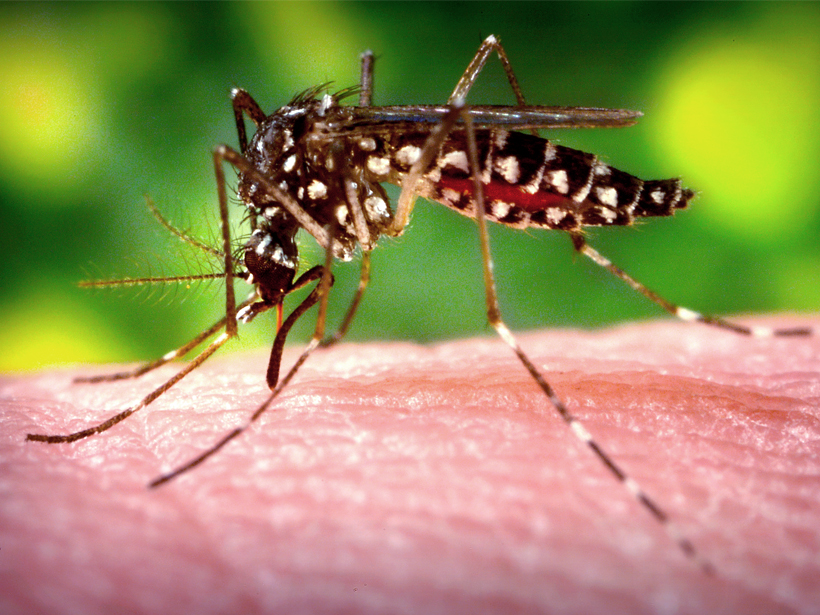Climate change imperils the health of every American, according to a report issued Monday by the White House.
“Current and future climate impacts expose more people in more places to public health threats,” states the scientific assessment by the U.S. Global Change Research Program. “Almost all of these threats are expected to worsen with continued climate change,” notes the report, developed by more than 100 experts from eight federal agencies. Some more vulnerable segments of the population, including people with low incomes, some communities of color and immigrant groups, pregnant women, young children, and the elderly, face the greatest impacts.
The report’s authors examined these climate change–related health risks for the past 3 years to update 2008 and 2014 U.S. government studies.
“It’s not just about polar bears and melting ice caps.”
“It’s not just about polar bears and melting ice caps. It’s about our kids, it’s about our families, it’s about our future,” Environmental Protection Agency (EPA) administrator Gina McCarthy said at a 4 April White House event to release the report. EPA led the development of the report along with the National Oceanic and Atmospheric Administration and the Department of Health and Human Services.
McCarthy said she hopes the report can “jump-start the conversation about the dangers of inaction” and ignite a “call to action” in response to the public health risk.
Here are seven angles on the climate change health threat among many covered by the report:
- Temperature-Related Illnesses and Deaths With climate change increasing the frequency and severity of extreme heat events, heat-related premature deaths during summers will rise by thousands to tens of thousands. Uncertainty about how well people will adapt to extreme heat through air conditioning, acclimatization, and other factors limits how precisely researchers can predict the death toll. At Monday’s rollout of the report, White House science adviser John Holdren said the increased heat-related mortality “will be a really big deal in the hottest parts of the United States, as well as in the Middle East and South Asia and other places.” Projections indicate a corresponding but smaller decrease in cold-related premature deaths during winter.[pullquote float=”right”]Heat-related mortality “will be a really big deal in the hottest parts of the United States, as well as in the Middle East and South Asia and other places.”[/pullquote]
- Air Quality Climate change will make meteorological conditions more conducive to the formation of ground-level ozone, a respiratory irritant. It will also roil weather patterns that affect the levels and locations of ozone and other air pollutants, making it harder for any particular regulatory scheme to reduce ozone. Rising temperatures, altered precipitation patterns, and increasing concentrations of atmospheric carbon dioxide likely will contribute to increases in some airborne allergen levels. That could lead to “longer and more intense allergy seasons,” Holdren said.
- Extreme Weather Projected increased frequency and severity of some extreme forms of weather likely will make coastal populations more vulnerable to health impacts from flooding and damage power, water, and communications systems and other infrastructure essential to public health and emergency response.
- Vector-Borne Diseases Climate change likely will expand the geographic range and time periods when vectors such as mosquitoes, ticks, and fleas can transmit illnesses, although better vector control and personal protection measures could help slow the rise of disease transmission rates.
- Water-Related Impacts Higher water temperatures could increase human exposure to water contaminants that cause illness, such as pathogens and toxic chemicals. More frequent extreme weather events and storm surges heighten the potential for key infrastructure for drinking water, wastewater, and storm water to fail because of damage or overcapacity.
- Food and Nutrition In addition to disrupting food production, prices, and trade in the United States and globally, climate change also likely will increase pathogens and toxins in food. Additionally, rising levels of carbon dioxide very likely will lower the nutritional value of food, including wheat and rice, by reducing plant species’ concentrations of protein and essential minerals.
- Mental Health Many people exposed to climate-related or weather-related disasters experience mental health consequences, according to the report. Those consequences include post-traumatic stress disorder, depression, and general anxiety.
—Randy Showstack, Staff Writer
Citation: Showstack, R. (2016), Seven ways climate change threatens U.S. population’s health, Eos, 97, doi:10.1029/2016EO049795. Published on 7 April 2016.
Text © 2016. The authors. CC BY-NC-ND 3.0
Except where otherwise noted, images are subject to copyright. Any reuse without express permission from the copyright owner is prohibited.

